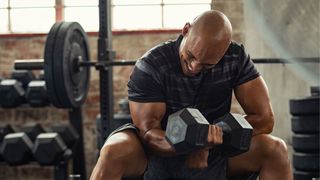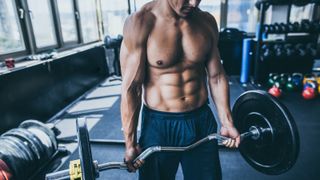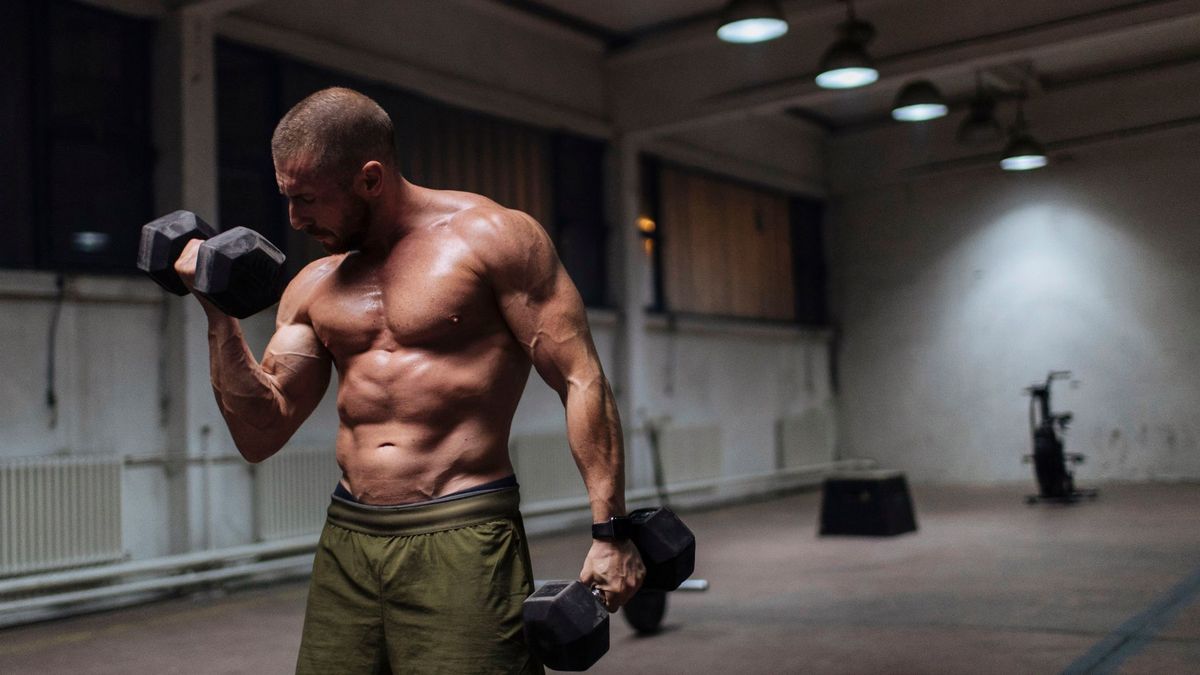These days, everyone craves bigger biceps to fill their t-shirt sleeves and signify their strength. But if you’re spending hours in the gym, your nutrition is on point, but are yet to have bulging biceps, then something’s not right. But what could it be?
In his latest YouTube video Strength and Conditioning Coach and Athlean-X Founder, Jeff Cavaliere, has shared some training mistakes you might be making that may be causing you to leave some serious gains on the table. Here are five reasons why you may not be making any progress when it comes to beefing up your biceps…
1. You’re not lifting the weight correctly
(Image credit: Getty Images)
Aka there’s no mind-muscle connection. This is a term you hear a lot within bodybuilding circles and it’s where you focus your mind on specific muscle contractions during an exercise. So, you’re not just aimlessly curling a dumbbell up and down, but focusing on every portion of that movement, and an easy way to do this is to slow your exercises down.
But, why? “You’re actually recruiting more motor units to the exercise at hand, and more specifically, bicep motor units,” explains Jeff. In laymen terms, your reps will be more effective and the more effective they are, the more likely they are to drive hypertrophy, leading to better results. It may mean that have to drop the weight down slightly, but if it means more quality reps, then it’s worth it.
2. Your wrist positioning is off
A lot of us curl with a neutral wrist position (keeping them straight or slightly bent), but Jeff says we should actually bend our wrists slightly back. Not only will this deliver a better muscle contraction, but he says it will stop your forearms from contributing too much to the exercise, so that your biceps can actually do more of the work. After all, more work done by a muscle means more gains!
3. You’re only doing one type of curl

(Image credit: Shutterstock)
Curls are the most popular bicep exercise witnessed on the gym floor but, remember, the bicep has two heads (the short head and long head) and to hit both of these and build well-rounded biceps, you need to be hitting both. This means you can’t keep doing your one favourite bicep exercise, you need to include a variety.
“Exercises with your arms out in front of you are generally going to be more short-head focused,” says Jeff. “Whereas exercises that have your arms back behind your body, like an incline curl, are going to give you a chance to get a little bit more of that stretch to focus on the long head.”
4. You’re only doing bilateral exercises
This is where you work two limbs at the same time, for example, doing a bicep curl with both arms. While bilateral exercises do hold a place in your training, you also need to include unilateral exercises (focusing on one limb at a time) and Jeff says this is key for eliminating “muscle imbalances”. If you’re constantly curling with both arms, using a barbell or EZ bar, you’ll never know if one arm is weaker than the other. If one is, you’ll never address this if you continue doing bilateral movements, so swap to a pair of dumbbells and do some single-arm exercises instead.
5. You’re not thinking about the biomechanics of your reps

(Image credit: Getty Images)
Here Jeff is referring to how you do your reps in order to stimulate growth. We’ve already mentioned that you can slow down your reps, but Jeff suggests you could try other types of reps too, such as purgatory reps, or mechanical dropsets.
The former is where you maintain the most challenging part of an exercise while the other working arm continues to perform the movement – for example, holding one arm in the middle position of a curl while the other arm performs an entire curl. The latter is where you use the same load for two exercises, but change the setup of the movement. There are also supersets too, but the aim of these different rep styles is that they’ll create more stimulus and overload your muscles, which means more growth.








:max_bytes(150000):strip_icc()/roundup-writereditor-loved-deals-tout-f5de51f85de145b2b1eb99cdb7b6cb84.jpg)


